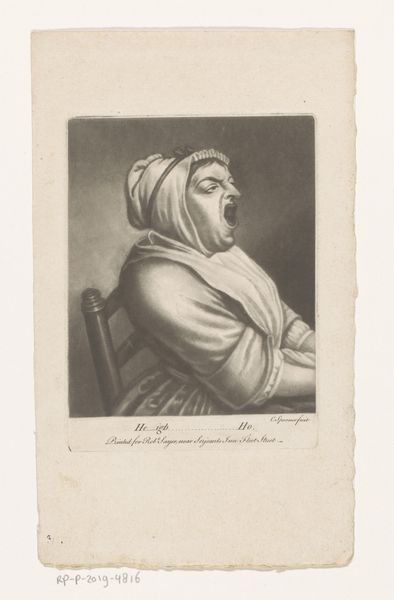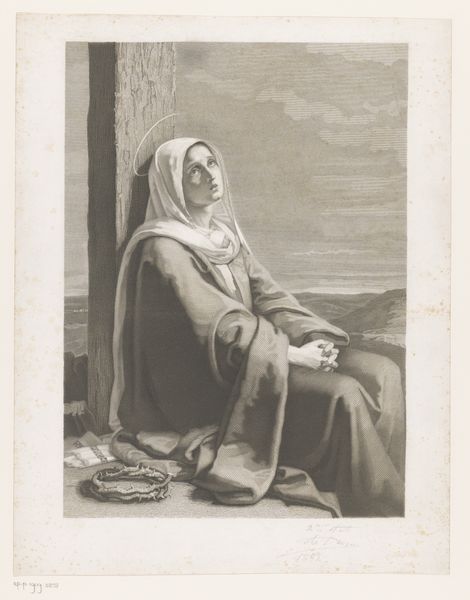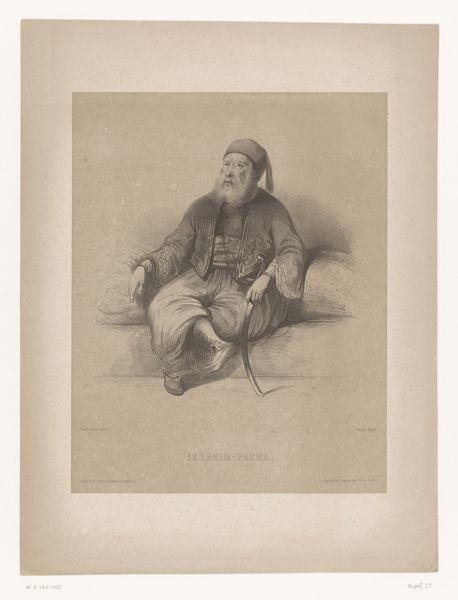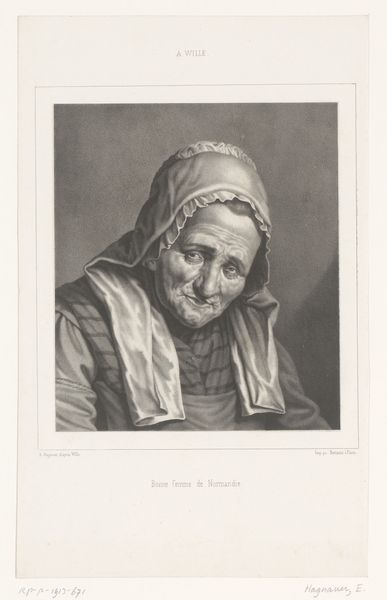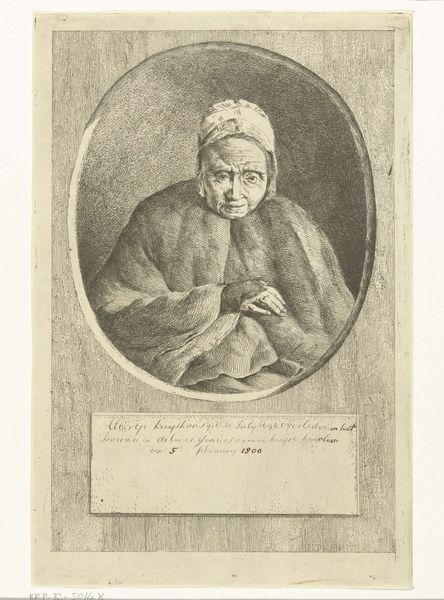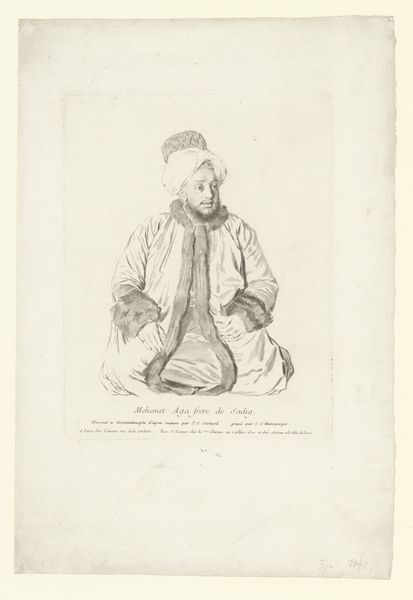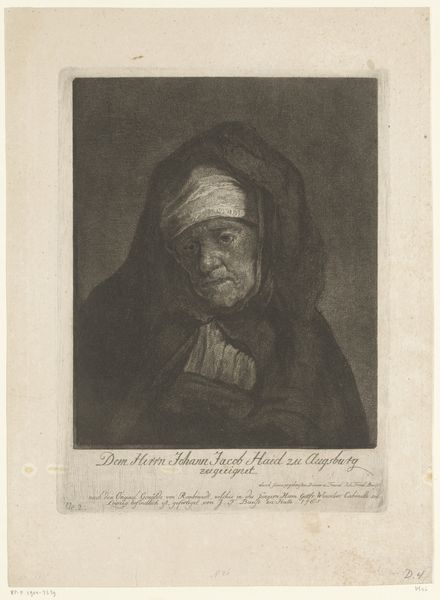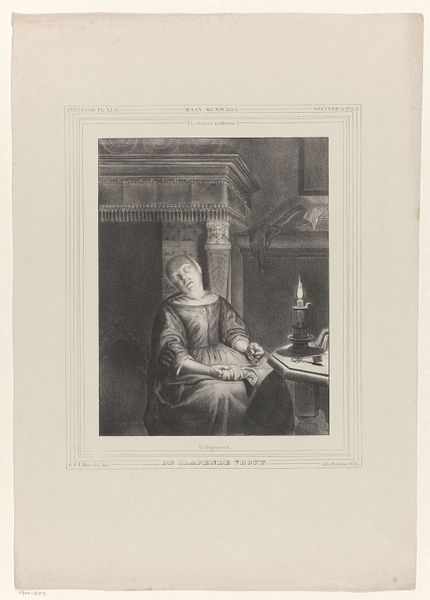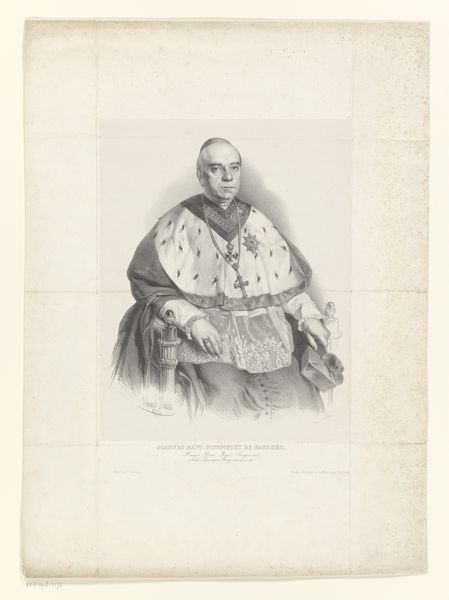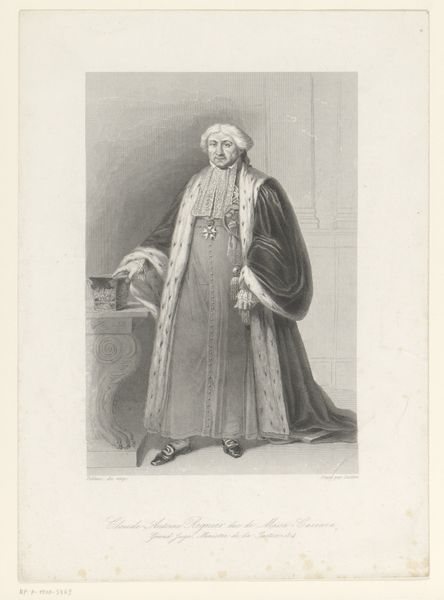
drawing, print, paper, pencil, engraving
#
portrait
#
drawing
#
dutch-golden-age
# print
#
figuration
#
paper
#
pencil drawing
#
pencil
#
remaining negative space
#
engraving
#
realism
Dimensions: height 365 mm, width 271 mm
Copyright: Rijks Museum: Open Domain
Curator: Here we have Johannes Reekers' "Portret van Johanna de Smeth," dating from 1851. It's an engraving, pencil and print on paper, currently held at the Rijksmuseum. Editor: The stark stillness of the image strikes me immediately. The subdued tones, the subject's poised hands—it feels meticulously composed. Curator: Indeed. Looking at the processes of its production, engravings like this were crucial for disseminating images to a wider audience. Consider the labour involved in creating this image and then replicating it. It served a particular social function of commemorating people like Johanna de Smeth and also acted as a calling card of sorts for the engraver. Editor: Absolutely, and it’s worth examining the composition itself. Note the lighting; Reekers employs a subtle chiaroscuro to define De Smeth's face, creating volume and drawing our eye to her expression. The balance is quite formal, almost symmetrical. Curator: The symbolism in the image would tell us about the sitter and also Reeker’s client base; for example, this is clearly not an aristocratic sitter. The details of her clothing speak volumes about her social standing. Were these images part of building one's family legacy? And what role did printmakers play in defining middle class sensibilities and values at the time? Editor: The cup on the table beside her is intriguing too. Its scale and placement in the lower right quadrant contributes to the asymmetrical symmetry. A humble visual cue but it lends to the feeling of realism Curator: Perhaps the cup highlights access to colonial commodities enjoyed at the time? Was Reeker’s being subtle commentary on domestic habits and global economies? Editor: That reading aligns. But to reiterate, formally, it echoes the circular forms in her bonnet and the chair's design, uniting the various visual elements in a subdued harmony. Curator: Seeing how seemingly straightforward portraiture served such potent ideological functions allows us to reconsider traditional categories in art history, blurring the lines between craft and high art by illuminating their shared participation in meaning-making. Editor: Yes. Focusing on how this piece formally communicates contributes to our understanding and encourages viewers to perceive these details through critical lenses. A fascinating piece.
Comments
No comments
Be the first to comment and join the conversation on the ultimate creative platform.
